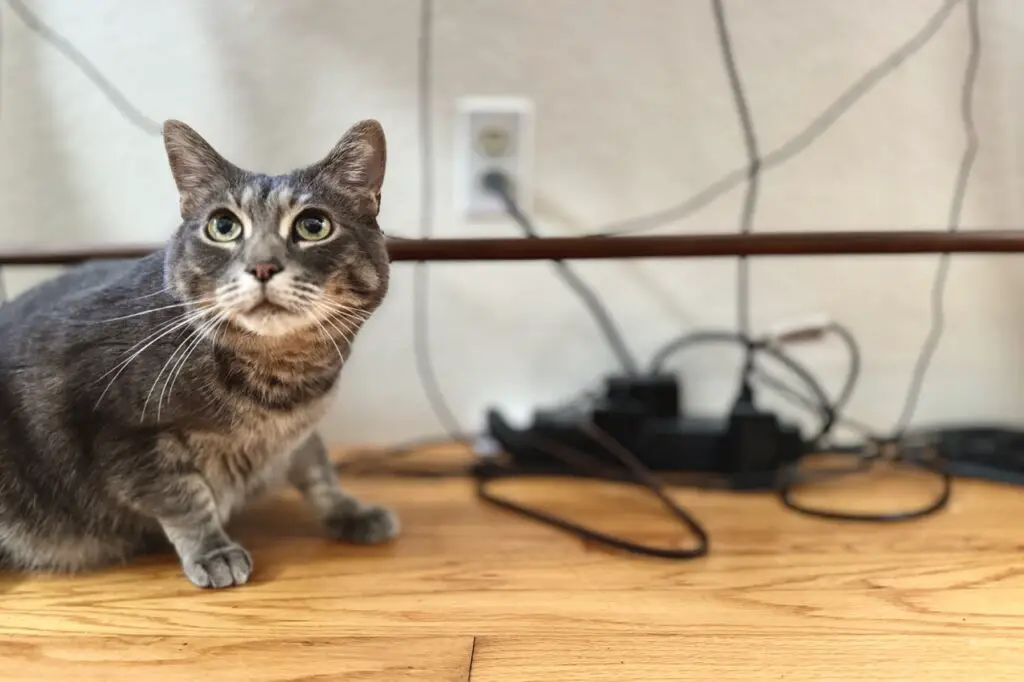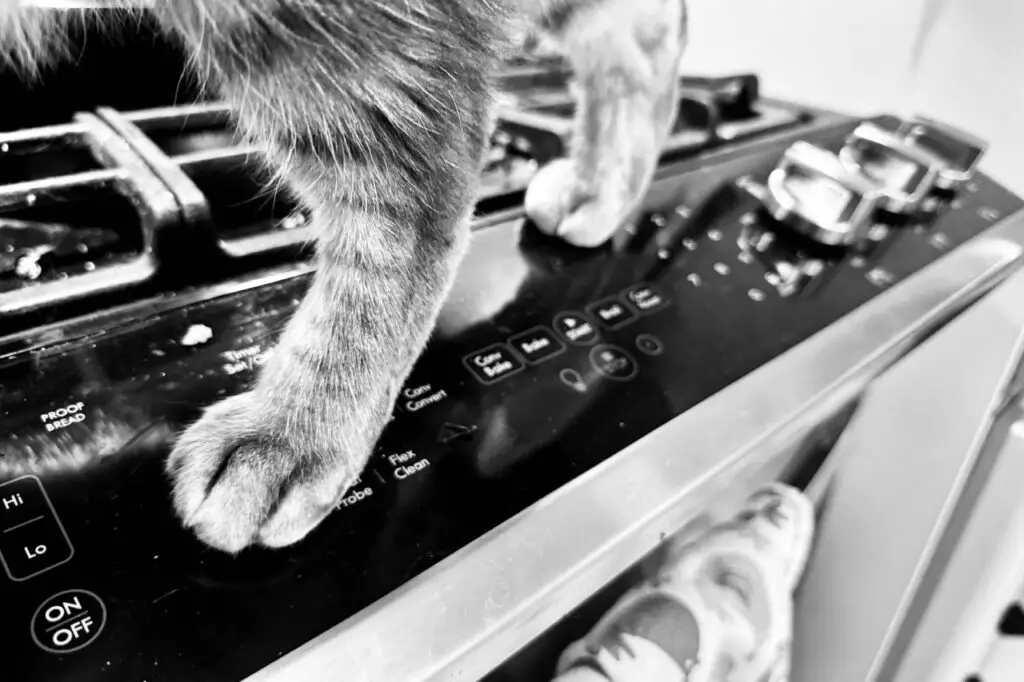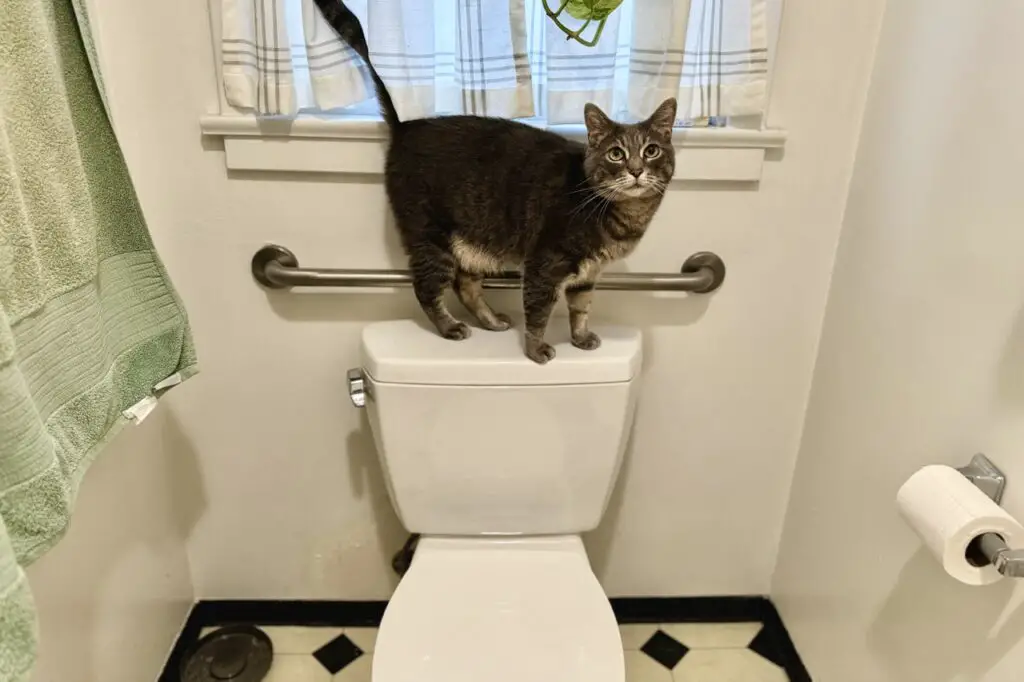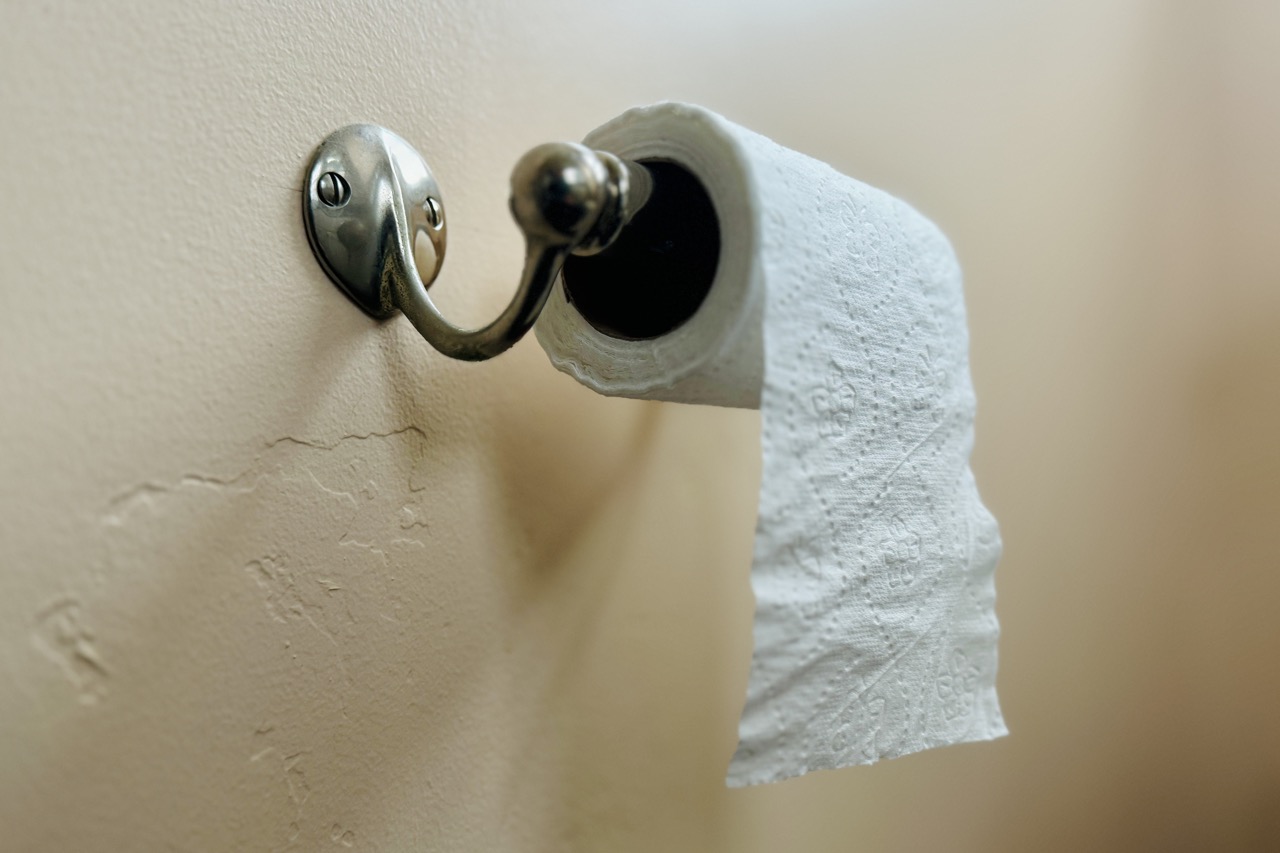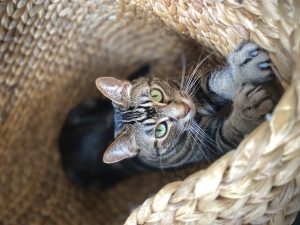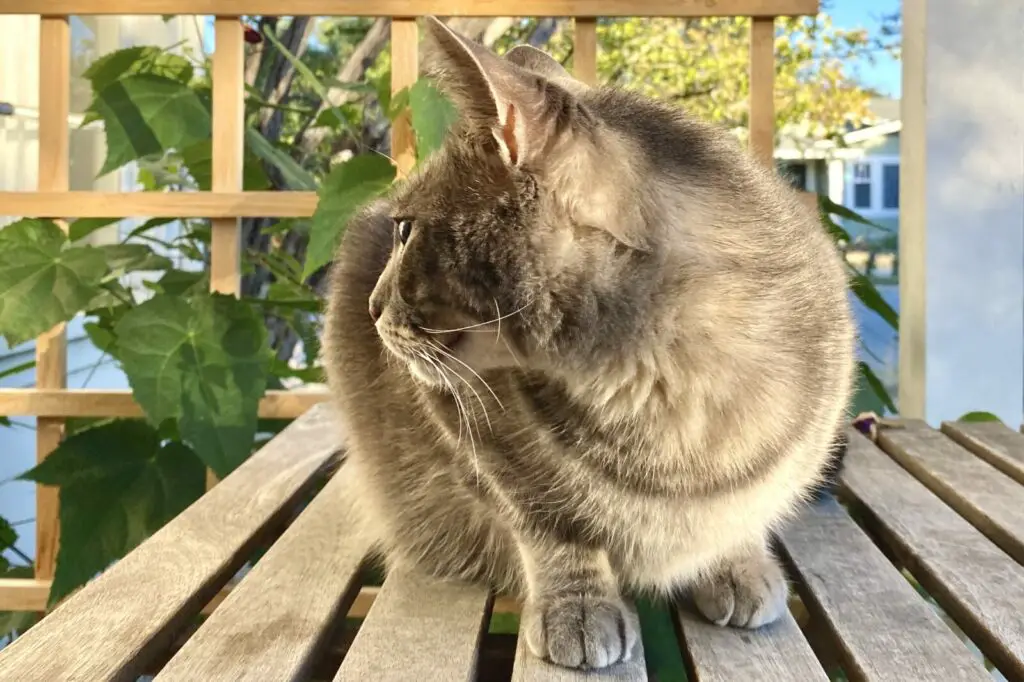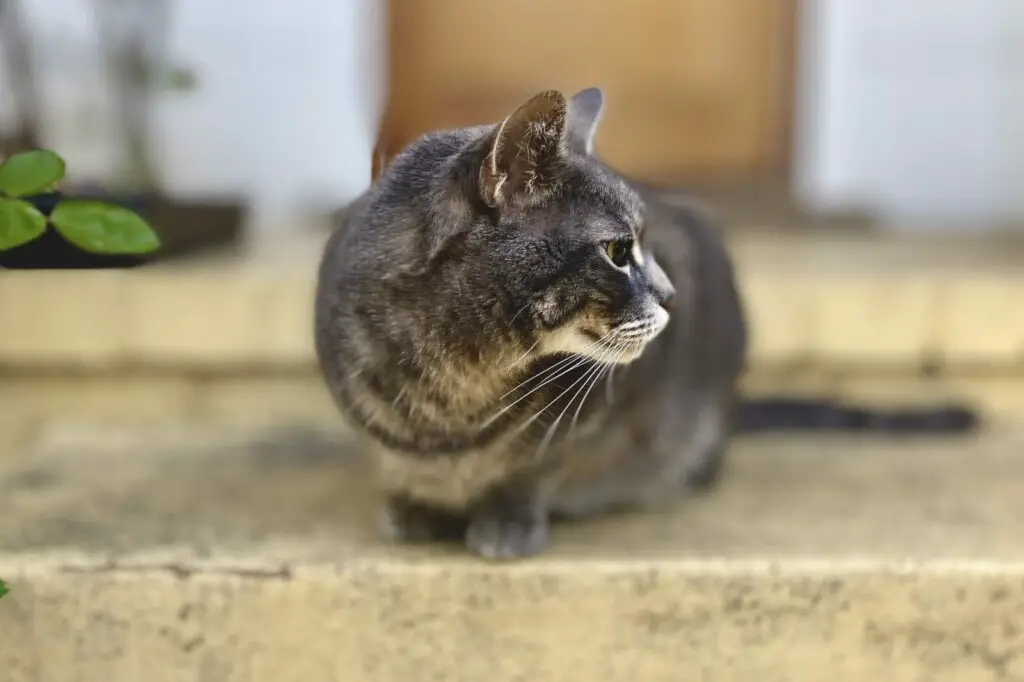Comprehensive Cat-Proofing Guide: Here’s How to Keep Your Cat and Your Stuff Safe
You’re here because you have questions about how you can go about cat-proofing your home. We’ve got answers for you.
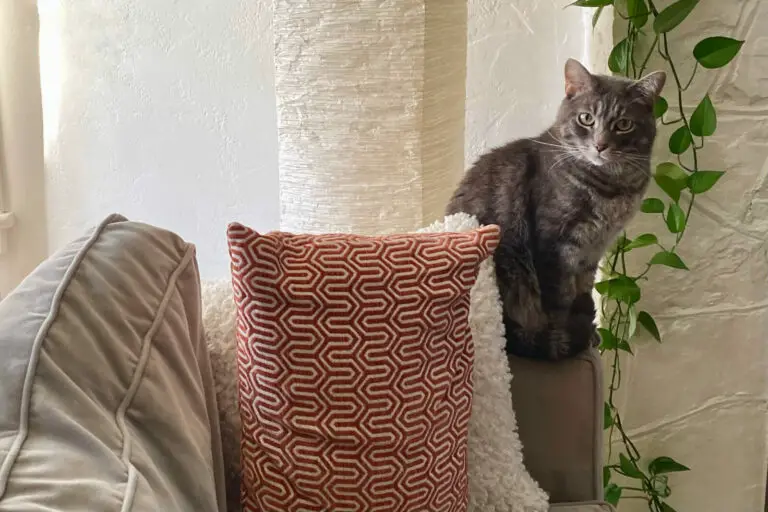
First, a couple of basic questions.
What is cat-proofing, exactly?
Cat-proofing is the process of making your home safe for – and from – your cat or kitten. It is both a critical step to take before bringing a new kitten or cat home, and really an ongoing practice throughout the journey of cat ownership.
No amount of cat-proofing will make your cat 100% safe from mishaps, but it will certainly reduce the risks.
Is it too late to do cat-proofing if I already have a cat?
Nope. Definitely not.
The sooner the better!
This article provides an overview of all the things you should consider when making your home cat-safe.
Each section below includes a general overview and introduction on a particular aspect of cat-proofing. Most sections also include a linked article that covers that area in depth and detail.
- It is highly recommended to read each linked article in order to be thorough in your cat proofing.
- Use the Table of Contents in the right column of this page to jump straight to a section you’re interested in.
Understanding Cat Behavior and Environmental Needs
Cats are creatures of instinct, and their behavior is deeply rooted in their natural tendencies. I can’t stress enough the importance of understanding these instincts when cat-proofing your home.
Recognizing why cats do what they do – whether it’s scratching, jumping up on things, or seeking cozy hideaways – allows you to create an environment that is both safe for your cat and protective of your valuable stuff.
You also have to keep in mind that every cat is different. So not all of what’s covered here will be relevant to your cat. It’s your job to figure out what cat-proofing your cat needs according to her personality and tendencies.
Why do cats scratch stuff?
Cats scratch to maintain their claw health, mark their territory, and stretch their muscles. Providing appropriate scratching surfaces can prevent damage to furniture and ensure your cat remains physically healthy and mentally stimulated.
Why do cats climb and jump up on stuff?
Similarly, cats have an instinctual need to climb and perch in high places.
This behavior, stemming from their ancestors’ need to hunt and avoid predators, can be accommodated with cat trees, shelves, and window perches, reducing the risk of your cat knocking over valuables or injuring themselves.
Why do cats hide in weird places?
Understanding a cat’s need for a safe and quiet retreat is also crucial. In the wild, cats seek out hidden spots to rest and observe their surroundings.
This means you need to provide secure hideouts where your cat can retreat and feel protected. This not only caters to their instinctual needs but also helps reduce stress and potential behavioral issues.
By recognizing and respecting these natural behaviors, you can cat-proof your home in a way that satisfies your cat’s instincts and very likely prevents some damage to your furniture and belongings.
To dive deeper into the intricacies of your cat’s behavior and how to cater to your cat’s environmental needs, check out our dedicated collection of articles on cat behavior.
Secure Hazardous Items
When it comes to cat-proofing your apartment or house, there are two main categories of hazards you need to address:
- Things in your home that may cause harm or injury to your cat.
- Things in your home that may get damaged or broken by your cat.
Of course, these are not mutually exclusive!
I’ve certainly had my share of mishaps: ruined armchair, toppled ceramic planters, Bean sick from getting into a bag of almonds – I could go on for a while. Yup, there’s a lot that can happen when you combine your home with a cat.
Fact is, cats are natural explorers, and their inquisitive nature often leads them to investigate every nook and cranny of their environment, sometimes with disastrous results.
To ensure the safety of your cat, it’s essential to identify and properly store or eliminate items that could cause harm.
The above items should be secured in some way. Either modifying it so that it no longer poses a risk, or keeping it in latching closets or cabinets so that it’s not accessible to your cat.
Cats can be surprisingly adept at opening cabinets, so consider adding childproof latches to keep them closed. Additionally, ensure that trash cans have tight-fitting lids to prevent cats from rummaging through garbage that may contain hazardous materials or food scraps that are toxic to them.
Another potential hazard comes from items that could cause choking or intestinal blockages. Cats may be tempted to play with or chew on small objects like rubber bands, paper clips, or string/ribbon, which can be swallowed accidentally. Keeping such items out of reach can prevent emergency trips to the vet.
Cat-proofing requires being proactive and probably changing some habits.
Electrical and Cord Safety
Cats are often drawn to the playful potential of dangling cords, which can lead to chewing and, consequently, a risk of electric shock or swallowing of harmful materials.
Ensuring safety from these electrical hazards is a key aspect of cat-proofing and helps to prevent accidents and injuries.
I’ve been lucky on this front. None of my cats have ever played with or chewed on cords.
The only issue I’ve really had is with wired headphones – Phoebe would make a game of batting and pulling the wire but only when I was wearing them and she was on my lap. But this problem is gone now that all my headphones are wireless.
The first thing I’d suggest is observe your cat closely around cords over the course of a few months. This will give you an idea of whether they are a draw for your cat or not. Until you’re certain, don’t leave your cat unsupervised with cords and wires.
Here are some things you can do in the name of prevention:
- Secure loose electrical cords with cord organizers or covers that not only keep them tidy but also less accessible to curious paws and teeth.
- You can also try wrapping cords in foil strips
- When not in use, unplug appliances to eliminate the temptation for your cat to play with the cords. For cords that can’t be hidden or unplugged, you can try applying a bitter taste deterrent to make them less appealing to your cat.
- If outlets seem like an issue, use outlet covers.
- Inspect your cords regularly for any signs of fraying or chewing, and replace them immediately if damage is found.
- Redirect undesired play or chewing behaviors to more appropriate outlets, such as a toy or a interactive playtime with you
Furniture and Decor
Cats will inevitably interact with various pieces of furniture and decorations, which can sometimes lead to damage or injury if not properly cat-proofed.
So, selecting cat-friendly furniture and safeguarding your belongings are essential steps to take here.
Furniture
When choosing furniture, opt for pieces with durable materials that can withstand the occasional scratch or climb. Certain fabrics, like microfiber or leather, are more resistant to cat claws. Tightly woven textiles can minimize snagging.
I have personally had success with both leather and microfiber. I especially recommend microfiber – my cats may try to scratch my sofa every once in a while, but just can’t get their claws into the fabric. So they go back to the cardboard scratcher I have next to the sofa.
If you already have furniture that you’re looking to protect, consider using cat scratch guards on the corners or areas where your cat is most likely to scratch. There’s also the option of using couch or chair covers.
I’m not a big fan of the look of either of these to be honest, but it can definitely help prevent damage, or make an already-shredded sofa look better.
My game plan here is to simply have all furniture that is microfiber or leather, and use lots of quality scratchers and scratching posts in strategic places (next to furniture).
Also, please don’t scold or punish your cat for scratching furniture. This behavior is natural for a cat. If you respond this way, the only thing you’ll be doing is teach your cat that you’re not safe to be around sometimes.
Furniture scratching is one of the most common complaints of cat owners, and there also happens to be a lot of misunderstanding about what works to stop or prevent it.
For more on stopping furniture scratching, check out our article on the 10 worst things you can do.
Decor
Securing your decor is just as important as choosing the right furniture. Make sure any breakable items are placed out of reach or in a secure cabinet.
Some techniques to consider:
- Anchor wall-mounted shelves and heavy bookcases to the wall to prevent tipping if your cat decides to climb or jump up.
- Secure decorative items like vases or picture frames with museum putty or anti-slip mats to reduce the risk of them being knocked over.
Windows, Screens, and Window Coverings
Windows can present a major hazard to cats if not properly secured. Here are some elements of windows that can be dangerous:
- Windows without screens
- Windows with screens that are not securely held in place
- Heavy window frames that don’t stay up/open by themselves
- Draw cords on blinds and curtains
The allure of the outdoors can be strong for a cat, and an open window may seem like an invitation to explore. But without proper precautions, windows can pose a risk of falls, especially in multi-story homes.
Moreover, window screens that are not securely fitted can give way under the weight of a cat, leading to potential injury or escape.
Cats may also be tempted to play with dangling cords, which can lead to entanglement or strangulation. The cords that form a closed loop are especially dangerous. When a cat gets caught or tangled in something, the reaction is sometimes panic and struggle that can quickly escalate into a dire situation.
Here are some things you can do to make windows safer:
- Make sure that all window screens are sturdy and well-maintained.
- Check screens regularly for tears or gaps, and replace them if they cannot withstand the weight of your cat.
- For added security, consider installing window guards or adjustable safety screens designed to keep cats safely indoors.
- Use clips to securely anchor screens in place.
- Don’t open windows without securely placed screens.
- Make sure there’s no chance of an open window frame suddenly slamming shut
- Don’t prop open window frames that would otherwise fall shut on their own (fix the frame or simply don’t open that window)
- Use cordless window coverings or secure cords completely out of reach of your cat at all times.
- Train family members and housemates on safety protocols for windows.
Toxins and Poisons
One of the most important parts of cat-proofing is identifying and safeguarding against toxins and poisons that are commonly found in the average home.
Cats have a different metabolism than humans and what may be harmless to us can be lethal to them. So it’s critical to understand which substances are toxic to cats and take the necessary steps to prevent accidental ingestion or exposure.
Human Foods
Common household toxins that pose a risk to cats include certain human foods, such as onions, garlic, chocolate, and xylitol (a sweetener found in many sugar-free products). Fortunately, cats don’t have much of a sweet tooth, so they aren’t as prone as dogs are to poisoning from some sugary human foods.
Chemicals
Additionally, many cleaning agents, pesticides, antifreeze, and rodenticides are highly toxic to cats and should be kept in securely locked cabinets or areas that are completely inaccessible.
Garages often have a number of hazards, including a variety of chemicals and toxins that are unsafe for cats. If you have a garage, make sure your cat is never able to go in unless you’ve thoroughly cat-proofed it.
Plants
Indoor plants can also be a danger, as some popular species like lilies, azaleas, and philodendrons are poisonous to cats. Some toxic plants are more dangerous to cats than others.
It’s important to research any plants you have or plan to bring into your home to ensure they are safe for feline members of the family.
Smoke and Essential Oils
Cats can also be at risk from second-hand smoke and essential oils diffused in the air, which can be toxic when inhaled or when residues are ingested during grooming. Be cautious when it comes to air quality and your pets.
Trash and Food Storage
Maintaining a cat-proof home requires ongoing attention to trash and food storage.
Trash
Not only can a cat rummaging through the garbage make a giant mess, it can also expose your cat to things that will cause harm. Therefore, you need a way to keep your cat out of the trash.
Trust me, it really is worth it to invest a little in a system that works. Here are options to consider to prevent dumpster diving:
- Trash cans with secure lids that close in a way that your cat can’t open it.
- Trash cans with a foot pedal for opening the lid
- In my experience, placing the trash can inside a latched cabinet, drawer, or pantry is the best option if your space allows.
Food Storage
Cats can develop a liking for some weird things you might not expect. For example, if I leave a loaf of bread on the counter, Gandalf will rip open the bag and eat the bread.
So when it comes to food storage, ensure that all food items are stored in sturdy containers with tight-fitting lids. Keep pantry doors closed and consider childproof locks if your cat is particularly determined.
Refrigerator contents should be kept out of paw’s reach, and any food left out on counters should be covered or put away promptly after use. If you get into this habit from the beginning, it may go far in limiting the annoying phenomenon of counter surfing (because there will be nothing yummy for your cat to find on the counter).
Entertainment and Enrichment
A well-rounded approach to cat-proofing your home includes providing ample opportunity for entertainment and enrichment. This is really an important part of the bigger picture, which is your cat’s overall physical and mental well-being.
Enrichment helps to satisfy a cat’s natural instincts to hunt, explore, and play. And it prevents boredom, reducing the likelihood of destructive behaviors. And that could mean you may never have to shop for sofa covers!
Toys
Toys are a fundamental aspect of feline enrichment. Interactive toys, such as feather wands, can stimulate your cat’s predatory instincts in a controlled environment. Puzzle feeders and treat-dispensing toys engage problem-solving skills and mimic aspects of hunting.
Always supervise play with string-like toys to prevent accidental ingestion, and inspect toys regularly for wear and tear, replacing them as needed.
Cat Furniture
In addition to toys, incorporate cat furniture such as scratching posts, cat trees, and window perches into your home.
These provide a designated space for your cat to exhibit natural behaviors like scratching and climbing, which in turn can help protect your furniture and decor. They also offer a sense of territory and security, which is essential for your cat’s emotional health.
Creating a stimulating environment doesn’t have to be complicated or expensive. Simple DIY toys, like cardboard boxes and paper bags (with handles removed for safety), can provide hours of entertainment.
The key is to offer a variety of options and rotate them to keep things interesting and fresh.
A properly cat-proofed home is not just about removing dangers but also about enhancing your cat’s quality of life through thoughtful enrichment.
For more, you might want to check out our indoor vs outdoor debate articles for more creative ideas on how to provide a fun and engaging environment for your indoor cat.
Litter Box Management
Effective litter box management is another non-optional piece of cat-proofing. Proper placement and maintenance of the litter box not only encourage good bathroom habits but also contribute to a hygienic environment for both your cat and your household.
Understanding and implementing best practices for litter box care can prevent unwanted accidents and dreaded litter box avoidance behaviors.
Litter Box Placement
When it comes to placement, the litter box should be in a quiet, easily accessible location where your cat feels safe. Avoid high-traffic areas or spots next to loud appliances that could startle your cat.
It’s also important to provide multiple litter boxes in multi-cat households to prevent territorial disputes. The general rule of thumb is to have one more litter box than the number of cats in your home.
I actually haven’t followed this rule, but I think I’m only able to get away with it because my cats are all litter mates.
Litter Box Maintenance
In terms of maintenance, litter boxes should be scooped at least once a day to remove waste and keep the area clean and odor-free.
Regularly replacing the litter and washing the box with mild, unscented soap helps to keep things sanitary and encourages your cat to use the box. Some cats are really picky, and start avoiding the box when it no longer meets their odor and cleanliness standards.
Litter Type
Be mindful of the type of litter you choose, as cats can also be very particular about texture and scent. Unscented, clumping litter is often preferred and makes cleaning easier.
Litter Box Type
Additionally, consider the type of litter box that best suits your cat’s preferences. Some cats prefer open boxes for easy access, while others feel more secure in a covered box that offers privacy.
Whichever type you choose, ensure it is large enough for your cat to move around in comfortably. You’ll also want to observe litter box use every so often.
Some cats – especially males – are “high pee-ers,” meaning that they might sometimes shoot their stream over the litter box wall. Gandalf is such a cat, and is the reason I now use a top-entry litter box.
It’s not ideal to have to purchase multiple boxes to figure out which one your cat likes best, but sometimes it’s worth the experiment. The last thing you want is a cat that doesn’t want to use the litter box.
If you’re about to adopt a cat or just got one, you might also want to check out the article on how to train a cat to use the litter box.
Preventing Escape and Ensuring Safety
If you’ve made the decision to keep your cat strictly indoors, as I have with mine, escape prevention is obviously another critical part of cat-proofing your home. Even if you do let your cat out, you may want to keep her in after dark.
An indoor cat that slips outside faces numerous dangers, from traffic to predators and the risk of getting lost. To keep your cat safe, you have to be proactive here.
First, examine your home for potential escape routes. Cats are quite adept at slipping through small openings, so ensure that windows and doors are securely latched or screened.
Be vigilant when entering or leaving your home, as cats can be quick to dart outside. Some owners find it helpful to create an “airlock” system, using a vestibule or double-door entryway to reduce the chance of direct access to the outdoors.
I always try to verify where each cat is when I’m leaving, and I look down at the floor by the door as I’m opening and closing it. When entering my house with a bag or backpack and I see a cat near the door, I shuffle into the house with the bag at my feet, which closes any gap between my legs and the door.
But honestly, I don’t really have to do any of that stuff because I trained my cats to not want to go out the door in the first place. And I do my best to optimize the indoor environment, which also helps.
Despite your best efforts, there’s always a chance your cat could escape. To increase the likelihood that you are reunited, ensure your cat is microchipped, and keep your contact information up to date with the microchip registry.
If you really want to offer more freedom, consider the options for giving your cat outdoor access safely.
Preventing escapes is about more than just blocking exits; it’s about creating a safe and enriching indoor environment that satisfies your cat’s needs, reducing their desire to venture outside.
Emergency Preparedness
It’s probably not the first thing that comes to mind when you think about cat proofing your home, but I think being prepared for emergencies is an important thing to include in the conversation.
Having a plan for your cat in an emergency could make a big difference if a situation ever arises.
A couple years ago, there was a wildfire close to my neighborhood, and for a while it looked like we would have to evacuate. Luckily it was contained, but not being ready to take my cats with me definitely added to my stress.
Here are some essential steps to take:
- Assemble an emergency kit tailored for your cat, including food and water, a portable litter box, and a familiar comfort item or two to ease stress.
- Ensure your cat is microchipped and that the microchip information is up to date in case of separation.
- Keep a cat carrier ready for each cat, and acclimate them to it to minimize anxiety during evacuation.
- Establish an evacuation plan with family or housemates.
- Arrange for a neighbor or friend to help with your cat if an emergency arises when you aren’t home. Make sure they have a key and are familiar with the emergency plan you have set for your pets.
Special Considerations When Cat-Proofing for Kittens
With cat-proofing, most of what applies for adult cats also applies to kittens. But with their small size, clumsiness, and inexperience, kittens can easily get themselves into trouble. So they deserve some additional considerations all their own.
One of the first things to consider is the size and accessibility of potential hazards. Kittens can squeeze into incredibly tight spaces, so it’s even more important to block off small openings and nooks where they might get stuck or find dangerous things.
This includes securing cabinets, closets, and drawers, as kittens can easily slip inside and come into contact with harmful substances or become trapped. Spaces behind or under appliances and heavy furniture also merit consideration.
If there’s a space or hole anywhere in your home that a kitten can fit through, your kitten will probably try it out.
Additionally, because kittens are still developing strength and coordination, they are a lot more prone to clumsy accidents. Be extra careful about balcony safety, open windows, and heights.
Baby gates can be an effective way to restrict access to certain areas, at least until they get big enough to jump over them! If you don’t already have baby gates, I think it’s easier (and definitely cheaper) to just have a designated cat room set up that you can close your kitten in when you’re not home.
Avoid toys with small detachable parts that could be swallowed, and supervise playtime with items like string or ribbons that could pose a choking hazard. I’d say just never make ribbons available in any form – if a cat swallows one, it can slice through intestines as it gets pulled down through the digestive system.
For purchased toys, be sure to read usage instructions. It’s actually safest to supervise play with most toys.
An Overall Strategy for Cat Proofing
The overall strategy for cat-proofing a home includes a 5-prong approach (CAATD), and taking it room by room.
The 5-Prong Approach to Cat-Proofing Your Home: CAATD
- Changing your own behaviors and developing new habits
- Adapting and protecting what’s already in your home
- Adding cat furniture and accessories to your home
- Training, playing, and bonding with your cat
- Daily monitoring and problem-solving
Because I like to be a dork about things sometimes, it’s an acronym to represent a comprehensive approach to cat proofing. And of course I made the acronym the word “cat” (with a silent “d” at the end – CAATD).
Cat proofing is not just a one-off event where you put dangerous things away and cover your furniture. It’s multi-faceted and comprehensive.
Here’s a quick breakdown of the CAATD method.
Changing your own behaviors and developing new habits
This one is easily overlooked, but honestly, most accidents that happen with cats are just cats being cats. In other words, it’s natural cat behavior and often the owner’s fault because it could have been prevented or trained or redirected.
For example, I have a habit of leaving dirty dishes and pans out on the stove and kitchen counter after dinner. Who should I be mad at when my cats go counter surfing? Myself, not my cats. In order to prevent the counter surfing, I need to be better and change my habit.
When you get a cat, there will be a lot of your own behaviors and habits that need to change in order to create the safest environment.
Adapting and protecting what’s already in your home
This one is all about securing the cat’s environment. Storing dangerous things out of reach, protecting furniture, rearranging or fixing things to be safer, getting rid of toxic houseplants, etc.
Adding cat furniture and accessories to your home
This means designing spaces in your home specifically for your cat to provide for basic cat needs and instinctual behaviors. This doesn’t have to break the bank – there’s a lot of DIY you can do here.
Training, playing, and bonding with your cat
If you put in the time to learn about how to shape cat behavior, and then do the work of training your cat, it can really pay off. People think only dogs can be trained, but cats can too.
Taking the time to play with your cat every day will channel your cat’s energy away from less desirable cat behaviors.
And training and playing with your cat both strengthen the bond you have with each other. And the more you bond with your cat, the more wonderful she becomes as a pet and family member.
Training, playing, and bonding are synergistic – they build off each other. And they result in more desirable cat behaviors, and fewer undesirable cat behaviors.
Daily monitoring and problem-solving
The work of cat proofing is never really done. Monitoring and addressing trouble spots needs to be a daily and ongoing thing.
And there you have it – the CAATD Approach to Cat Proofing. If you try it, feel free to shoot me an email and let me know if it was helpful.
Cat-Proofing Room By Room
When you first cat-proof your home, I recommend taking it room by room. It’s worth the time to think through the kinds of things that could happen and what you can do to prevent them.
Start by doing a walkthrough of your entire home. Stand in each room, look around, and imagine what a curious cat might try to do. Take notes about what the room needs. Here’s a list of general questions to apply as you do this:
- What about the room do you need to change?
- Is there anything you need to remove? Anchor to the wall?
- What will your cat try to climb or jump up on?
- What might fall or get pulled down when your cat jumps or climbs?
- How’s the vertical cat space? Does the room need a cat tree or cat bed?
- Are the windows and screens safe? Any draw cords to tie up high?
- Is there any furniture that might be seen as a scratching post?
- Is there a way for your cat to sit at the window and look out?
- Are there fragile things that might be knocked over and broken?
- Are there gaps behind or under furniture where your cat might hide?
Last Meows
Cat-proofing your home is a multifaceted process that goes beyond safeguarding against obvious dangers. It encompasses everything from securing hazardous items and ensuring electrical safety to creating an enriching environment and preparing for emergencies.
Each area of cat-proofing plays a vital role in the health, safety, and happiness of your feline fuzz butt.
Remember that while physical modifications to your home are crucial, they should be complemented by behavioral training. Both training your cat, and training yourself (i.e., changing some habits like leaving dishes out).
FAQ
Is cat-proofing worth the effort?
If you like your cat, and you want your stuff to not get busted and ruined, then yes. Yes it is.
What about kitten-proofing? Is that any different?
The vast majority of what we talk about here applies to both cats and kittens. There are a few things that are unique to kittens, though, and there’s a section dedicated to that above.
You might also like…
